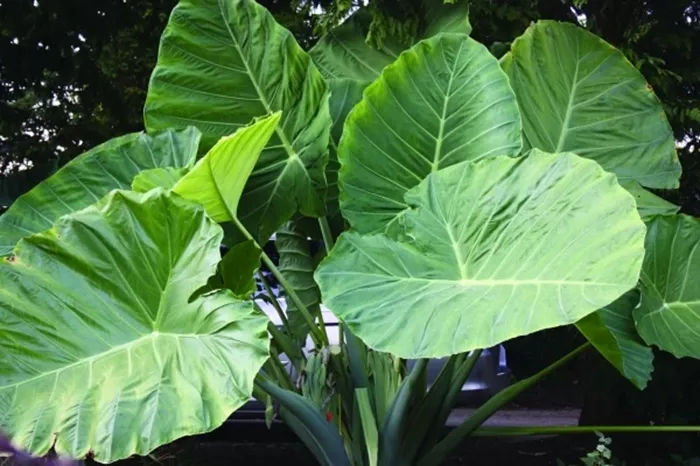Taro (Colocasia esculenta) is a fascinating tropical plant renowned for its wide, waxy leaves that are as functional as they are beautiful. These large, heart-shaped leaves are a signature feature of taro, contributing to its lush, tropical appearance and its ability to thrive in wet, humid environments. Understanding why taro plants have wide waxy leaves involves exploring their ecological adaptations, physiological functions, and evolutionary advantages.
The Ecological Role of Wide Leaves in Taro
Taro is native to Southeast Asia and thrives in marshy, water-abundant habitats where sunlight can be intense but conditions are often humid and shaded by canopy layers. The wide leaves serve several ecological purposes:
Maximizing Light Capture: The broad surface area of taro leaves allows the plant to capture more sunlight for photosynthesis, which is crucial in dense, competitive environments such as rainforests or wetlands where light is filtered through layers of vegetation.
Efficient Water Management: Although taro grows in wet conditions, its leaves are designed to repel water rather than absorb it. The leaf surface is covered with tiny hairs that prevent water from settling directly on the leaf, making them water-repellent. This adaptation helps avoid fungal infections and other moisture-related damage, keeping the leaves healthy in a rainforest environment.
Waxy Coating: Protection and Survival
The waxy texture of taro leaves is a key feature that enhances their survival:
Water Repellency: The waxy cuticle on the leaf surface acts as a barrier against excess water, allowing rain to bead and roll off easily. This prevents prolonged wetness that could lead to decay or disease.
Reduction of Water Loss: Despite the humid environment, the waxy coating helps regulate transpiration by minimizing water loss through evaporation, maintaining the plant’s internal water balance.
Physical Defense: The waxy surface, combined with the leaf’s thick texture, offers some protection against herbivores and physical damage, contributing to the plant’s longevity in challenging environments.
Structural Adaptations Supporting Leaf Function
Taro leaves are attached to the stem by a thick, fleshy petiole that is sometimes purplish and can be quite long (25–80 cm). This petiole is peltate, meaning it attaches near the center of the leaf, which supports the wide leaf blade and helps it droop downward naturally. The petiole also plays a role in gas exchange, allowing the plant to thrive in flooded conditions by facilitating oxygen movement between the air and submerged parts of the plant.
Inside the stem, specialized pockets hold water like a sponge, supporting the plant’s hydration and nutrient transport. This internal water storage complements the leaf’s water-repellent surface, ensuring the plant remains hydrated without waterlogging its tissues.
Evolutionary and Functional Advantages
The combination of wide, waxy leaves and specialized petioles is an evolutionary adaptation that allows taro to:
Thrive in Waterlogged Soils: The petiole and stem adaptations enable taro to survive and grow in flooded or saturated soils where many plants cannot.
Optimize Photosynthesis: Large leaves maximize light absorption, essential for energy production in shaded or competitive environments.
Maintain Leaf Health: The waxy coating and water-repellent hairs prevent damage from excess moisture and pests, supporting the plant’s overall fitness and longevity.
Conclusion
Taro’s wide waxy leaves are a remarkable example of nature’s ingenuity, perfectly adapted to the plant’s tropical, water-rich habitats. Their broad shape maximizes sunlight capture, while the waxy surface and tiny hairs protect against water damage and disease. Supported by a specialized petiole that facilitates gas exchange and water management, these leaves enable taro to flourish in environments that challenge many other plants. This synergy of form and function not only sustains taro’s growth but also highlights the intricate balance of adaptations that plants develop to thrive in their native ecosystems.
In essence, the wide waxy leaves of taro are not just a striking feature but a vital adaptation that ensures the plant’s survival, productivity, and ecological success in its natural habitat.


